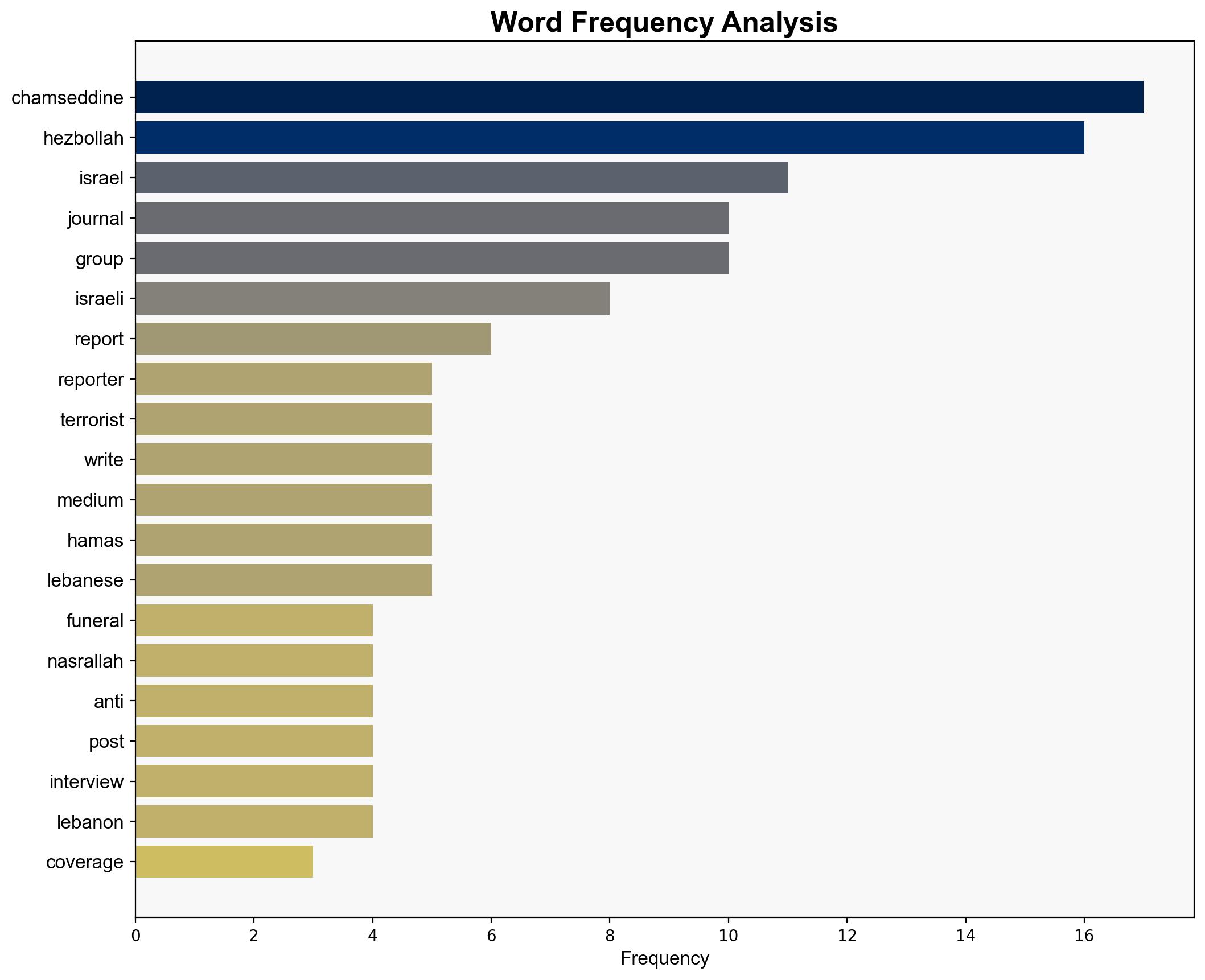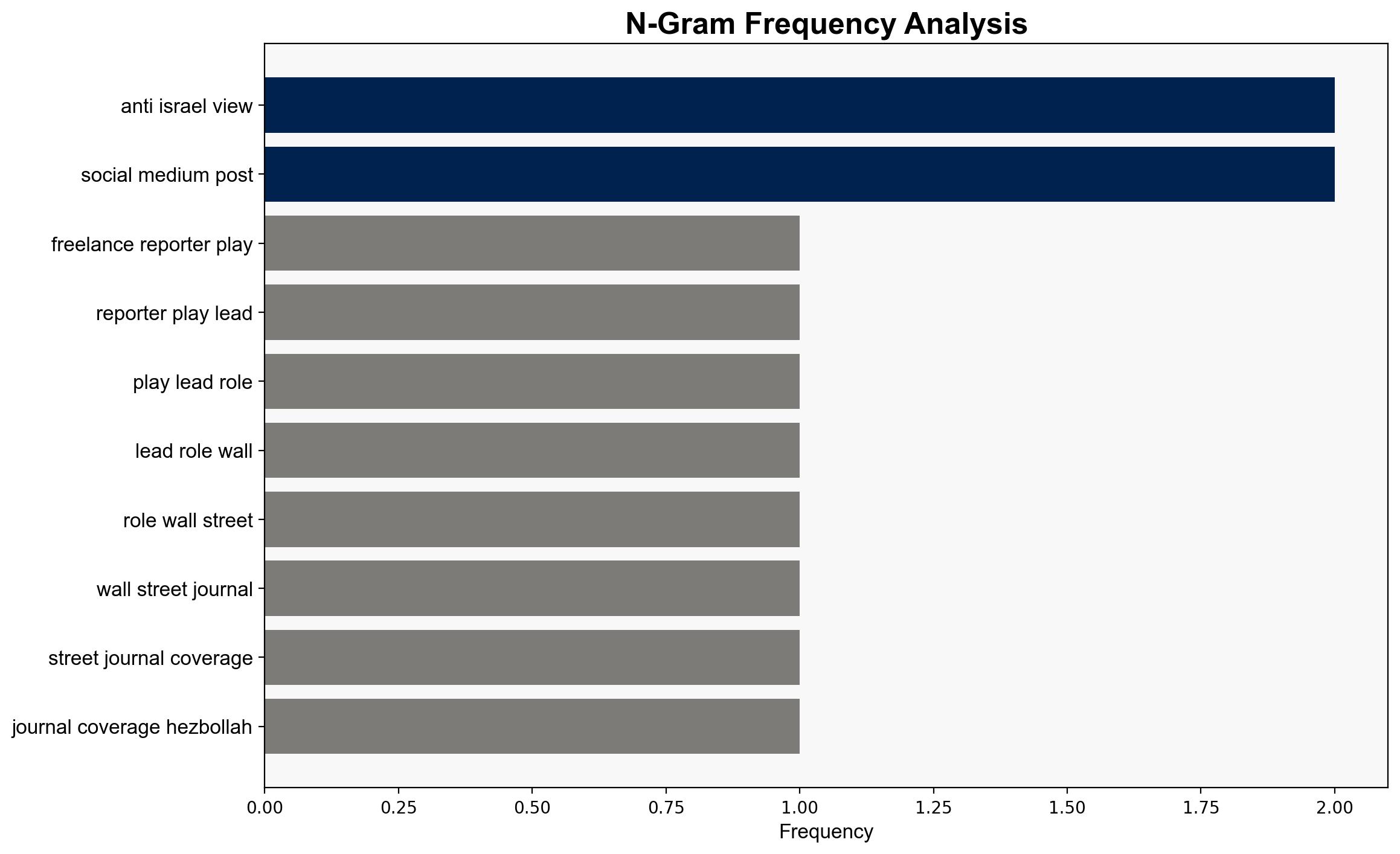WSJs Hezbollah Coverage Led by Reporter Who Praises Terrorist Groups Leaders and Fumes Against The Israeli Enemy – Washington Free Beacon
Published on: 2025-07-28
Intelligence Report: WSJs Hezbollah Coverage Led by Reporter Who Praises Terrorist Groups Leaders and Fumes Against The Israeli Enemy – Washington Free Beacon
1. BLUF (Bottom Line Up Front)
The most supported hypothesis is that the reporter’s personal views may influence the coverage of Hezbollah in the Wall Street Journal, potentially leading to biased reporting. Confidence level: Moderate. Recommended action: Conduct an internal review of editorial policies and reporter affiliations to ensure balanced reporting.
2. Competing Hypotheses
1. **Hypothesis A**: The reporter’s personal views align with Hezbollah, influencing biased reporting in favor of the group and against Israel.
2. **Hypothesis B**: The reporter maintains professional objectivity despite personal views, and the coverage reflects a broader editorial stance or journalistic freedom.
Using ACH 2.0, Hypothesis A is better supported due to the reporter’s documented praise for Hezbollah and condemnation of Israel, as well as affiliations with entities that share similar views.
3. Key Assumptions and Red Flags
– Assumption: The reporter’s social media posts and affiliations directly impact their professional reporting.
– Red Flag: Lack of direct evidence linking personal views to specific editorial decisions.
– Cognitive Bias: Confirmation bias may lead to overemphasizing the reporter’s personal views as the primary influence on reporting.
– Missing Data: Absence of internal editorial guidelines or oversight mechanisms from the Wall Street Journal.
4. Implications and Strategic Risks
– **Geopolitical**: Biased reporting could influence public perception and policy decisions regarding Middle Eastern conflicts.
– **Psychological**: Potential erosion of trust in media outlets perceived as biased.
– **Cascading Threats**: If unchecked, biased reporting could exacerbate tensions between pro-Israel and pro-Palestinian groups.
5. Recommendations and Outlook
- Conduct an internal audit of editorial practices to ensure balanced reporting.
- Implement training programs on journalistic ethics and bias awareness.
- Best Case: Enhanced credibility and trust in media reporting.
- Worst Case: Continued perception of bias leading to decreased readership and influence.
- Most Likely: Incremental improvements in editorial oversight and transparency.
6. Key Individuals and Entities
– Adam Chamseddine
– Hassan Nasrallah
– Tarek Hamoud
– Abeer Ayyoub
– Giselle Jetti
7. Thematic Tags
national security threats, media bias, Middle East conflict, journalistic ethics




